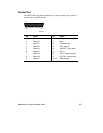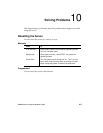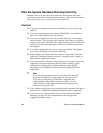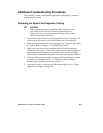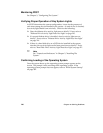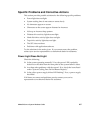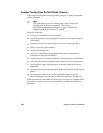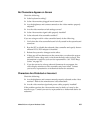
202
Chapter 10 Solving Problems
Initial System Startup
Problems that occur at initial system startup are usually caused by incorrect
installation or configuration. Hardware failure is a less frequent cause.
Checklist
❑ Are all cables correctly connected and secured?
❑ Are the processor modules fully seated in their slots on the system
board?
❑ Are all add-in ISA and PCI boards fully seated in their slots on the
system board?
❑ Are all jumper settings on the system board correct? For information,
see Chapter 8, "System Board Jumpers."
❑ Are all jumper and switch settings on add-in boards and peripheral
devices correct? To check these settings, refer to the manufacturer’s
documentation that comes with them. If applicable, ensure that there
are no conflicts—for example, two add-in boards sharing the same
interrupt.
❑ Are all DIMMs on the memory module installed correctly? Refer to
Chapter 6, "Server Resources," for installation instructions.
❑ Are all add-in boards and peripheral devices installed correctly? Refer
to Chapter 4, "Working Inside Your System."
❑ If the system has a hard disk drive, is it properly formatted or defined?
❑ Is the SCSI hot-docking backplane configured and terminated correctly?
For information about the board, see Chapter 5, “SCSI Backplane and
Drives: Hot-swapping and Configuring .”
❑ Are all device drivers properly installed? For information about
installing drivers, see Chapter 3, "Configuring The System."
❑ Are the configuration settings made with the SCU correct? For
information about running the SCU, see Chapter 3, "Configuring The
System."
❑ Is the operating system properly loaded? Refer to the operating system
documentation.
❑ Did you press the power button on the front panel to turn the server on
(power-on light should be lit)?






